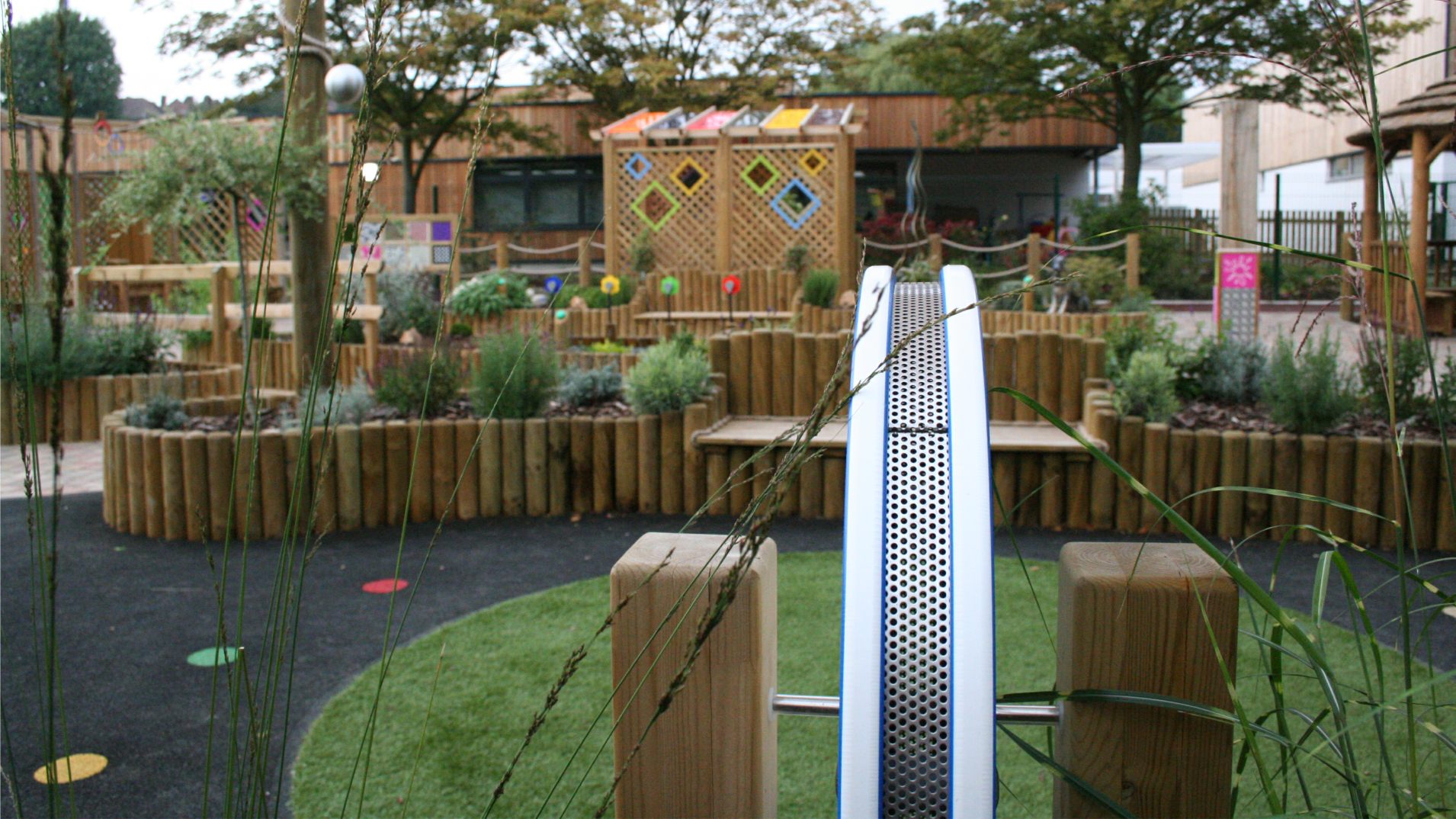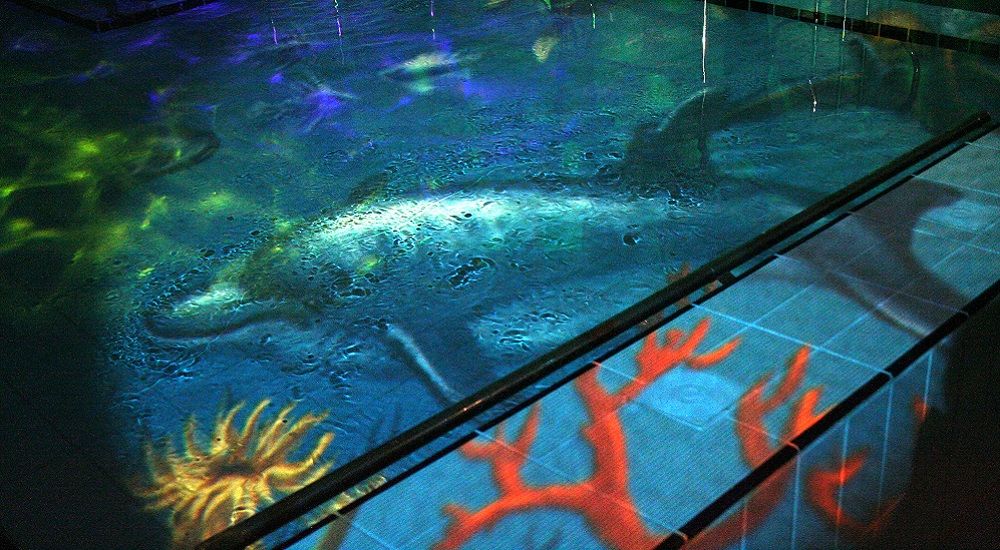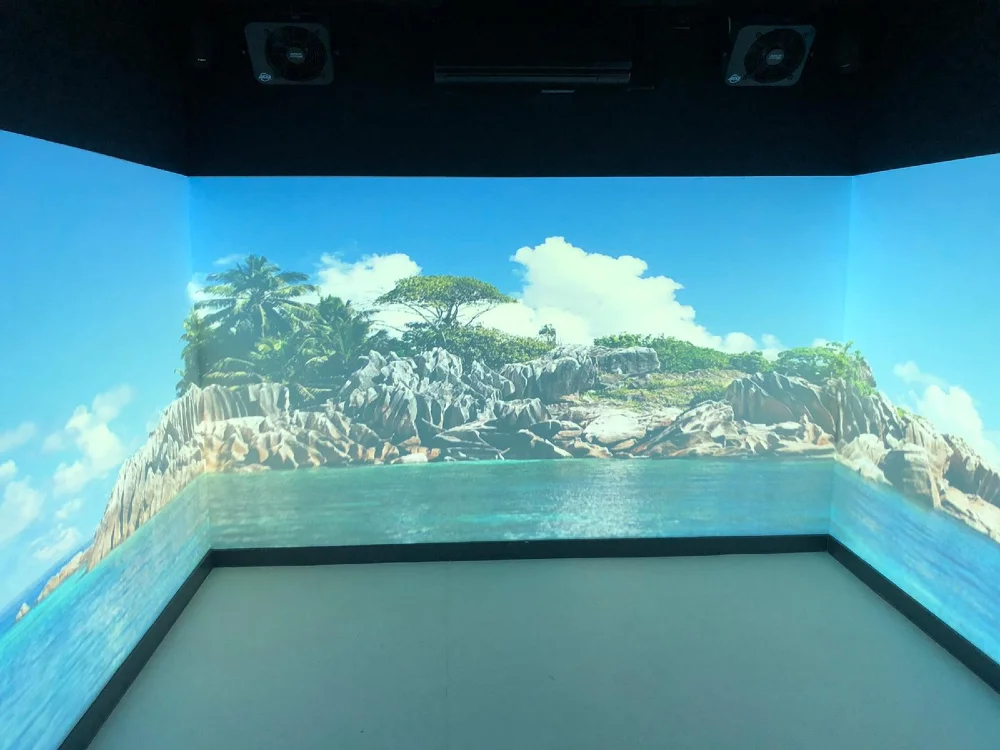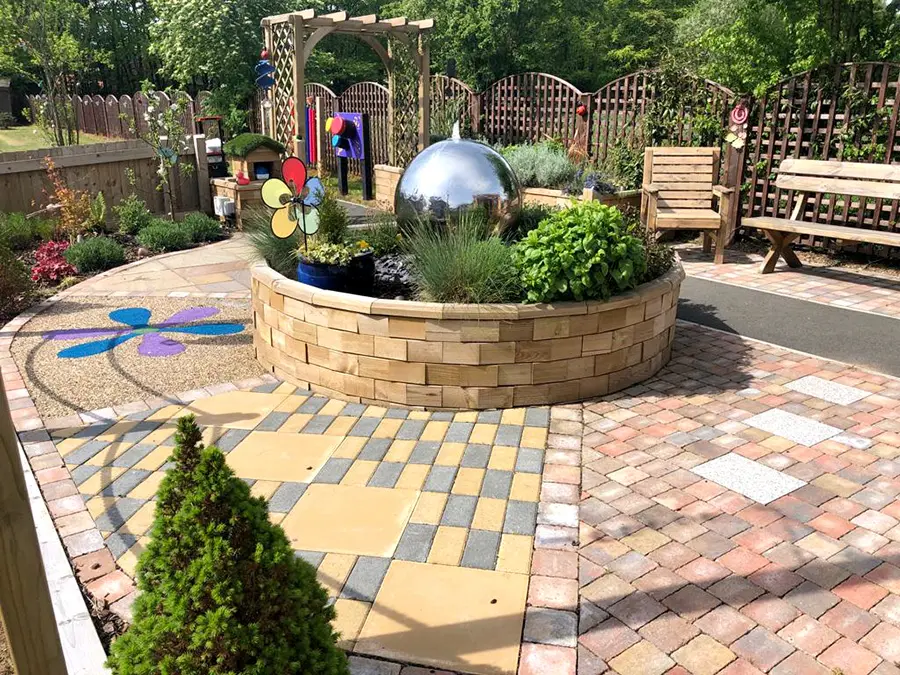Sensory Gardens are a fantastic way to transform an outdoor setting into a stimulating sensory experience.
There are many types of outdoor sensory spaces that can be accessed by a range of ages, needs and abilities – providing an inclusive and joyful environment for all.
In this week’s Sensory Spaces, we explore the key features of what makes up a Sensory Garden, where you would find one and some key benefits of sensory gardens for all types of users.
What is a Sensory Garden?
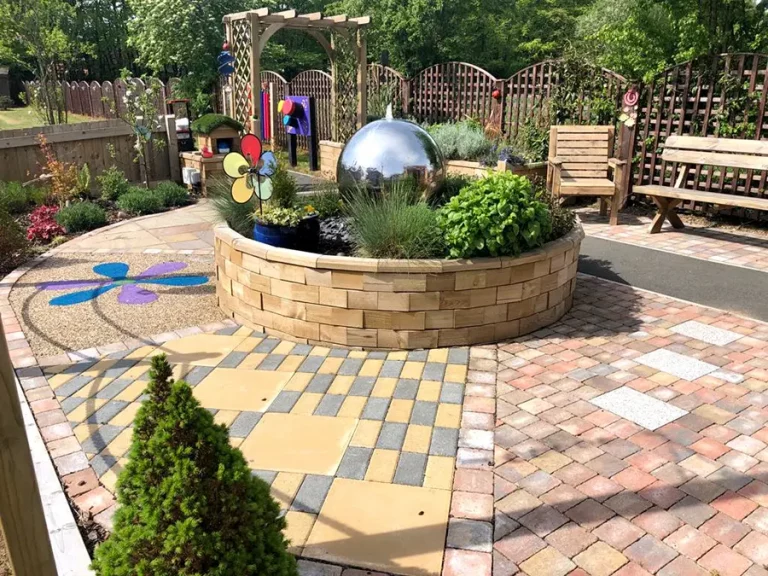
A Sensory Garden is an outdoor environment, designed with the purpose of stimulating and engaging the senses – touch, taste, sight, sound and smell.
In order to transform a typical garden into a sensory garden, elements such as greenery, plants, and nature are paired with interactive and developmental features.
When creating a Sensory Garden, an important part is understanding who you intend the garden to be for and what benefits you would like to be gained from it.
The beauty of Sensory Gardens is the inclusivity it offers and when designing the outdoor space, there are many ways to ensure all users get maximum use and enjoyment.
Who can access a Sensory Garden?
Sensory Gardens can be accessed by a range of users of different ages, needs and abilities. The key to creating this accessibility lies within the features and equipment included.
Younger Users
For the younger generation, Sensory Gardens can provide a great opportunity for users to develop some of their core skills such as social interaction, cognitive skills, emotional regulation and self-reliance.
This is why Sensory Gardens are so popular within both Mainstream and Special Schools. Activity based learning can be incorporated through various tasks such as planting, digging, watering and harvesting. This can be a more active and engaging way to learn within a safe environment. For students who have additional needs (for example: Autism), sensory based features can then be incorporated to encourage a higher level of engagement for neurotypical individuals who struggle to concentrate or process information.
Older Users
There are also many users in their later stages of life who can access a Sensory Garden and gain the benefits.
For example, Sensory Gardens are a popular feature within Care Homes for elderly residents to visit. Just like for younger users, the older users can also gain educational benefits in ways of encouraging them to revisit and reminisce on things they have previously learned.
Sensory Gardens can also provide a fun change of scenery for users who have become less mobile overtime, and help to enrich and immerse the senses that are commonly impeded as we age.
There have also been many studies into the benefits of Sensory Gardens for users who have Dementia. It is suggested that individuals with dementia generally will be less likely to become agitated / distressed when in an outdoor environment with fresh air and space to exercise.
The therapeutic elements that Sensory Gardens offer can also be beneficial for users with Dementia by incorporating certain smells, noises, sights and textures. Alzheimer’s Society advise that this can help trigger certain memories, feelings or even develop a stronger connection with someone.
What would you find in a Sensory Garden?
Now that we’ve explored the type of users who can benefit from sensory gardens, let’s look at some sensory garden features.
Interactive Soundboard & Interactive Animals
Interactive Soundboards and Animals use a combination of visual, auditory and tactile elements.
The Soundboard pictured on the left allows users to explore different types of animals through pressing the buttons to hear animal sounds and matching them up with the image. The interactive animal figure on the right allows users to hear the animal’s noises through pressing the button.
Pergola with Coloured Roof Panels & Sensory Pathway
Coloured Roof Pergolas (pictured to the left) are a fantastic visual tool, producing various colourful effects when reflected in the sun.
Additionally, the colours incorporated into Sensory Pathways (pictured to the right) can be of visual benefit with bright colours, shapes and patterns. They can also include different textures for users walking across, providing an additional tactile benefit.
Raised Planter and Wheelchair Accessible Raised Planter
As landscaping is an important part of gardens, there is equipment that can be added to Sensory Gardens to make activities such as gardening more sensory friendly and accessible.
The raised planter (to the left) allows users who are less mobile to access the plants that would usually be in the ground. In addition, raised planters can include features such as water spheres, which can be operated with a button to turn on visual water effects.
Raised Planters can also be adapted to be wheelchair accessible (image to the right), so that wheelchair users can comfortably and safely carry out gardening activities. Sensory Plants that have a mixture of different aromas can be planted such as mint and lavender to make it even more sensory friendly.
To see more images of Sensory Garden features and equipment, check out our Sensory Garden Gallery.
Where would you find a Sensory Garden?
There are lots of different environments where you can find a Sensory Garden. Here’s just a few examples of where you may find them.
- Special and Mainstream Schools
- Care Homes
- Residential Homes
- Day Care Centres
- Hospitals
- Public / Leisure Settings
Key Benefits of Sensory Gardens
To end our exploration of Sensory Gardens, lets go over our key benefits.
- Accessible to a range of users across different ages, needs and abilities.
- A fun way of interacting with the natural environment around us.
- Offers a safe space to develop and improve core skills.
- Can be incorporated into a variety of locations.
- Encourages an interactive and engaging way of learning outside of the classroom.
- Facilitates a calming environment for users to visit and de-stress.
To see more images of Sensory Garden features and equipment, check out our Sensory Garden Gallery.
Alternatively, contact us today to see how we can help create your outdoor sensory space!

